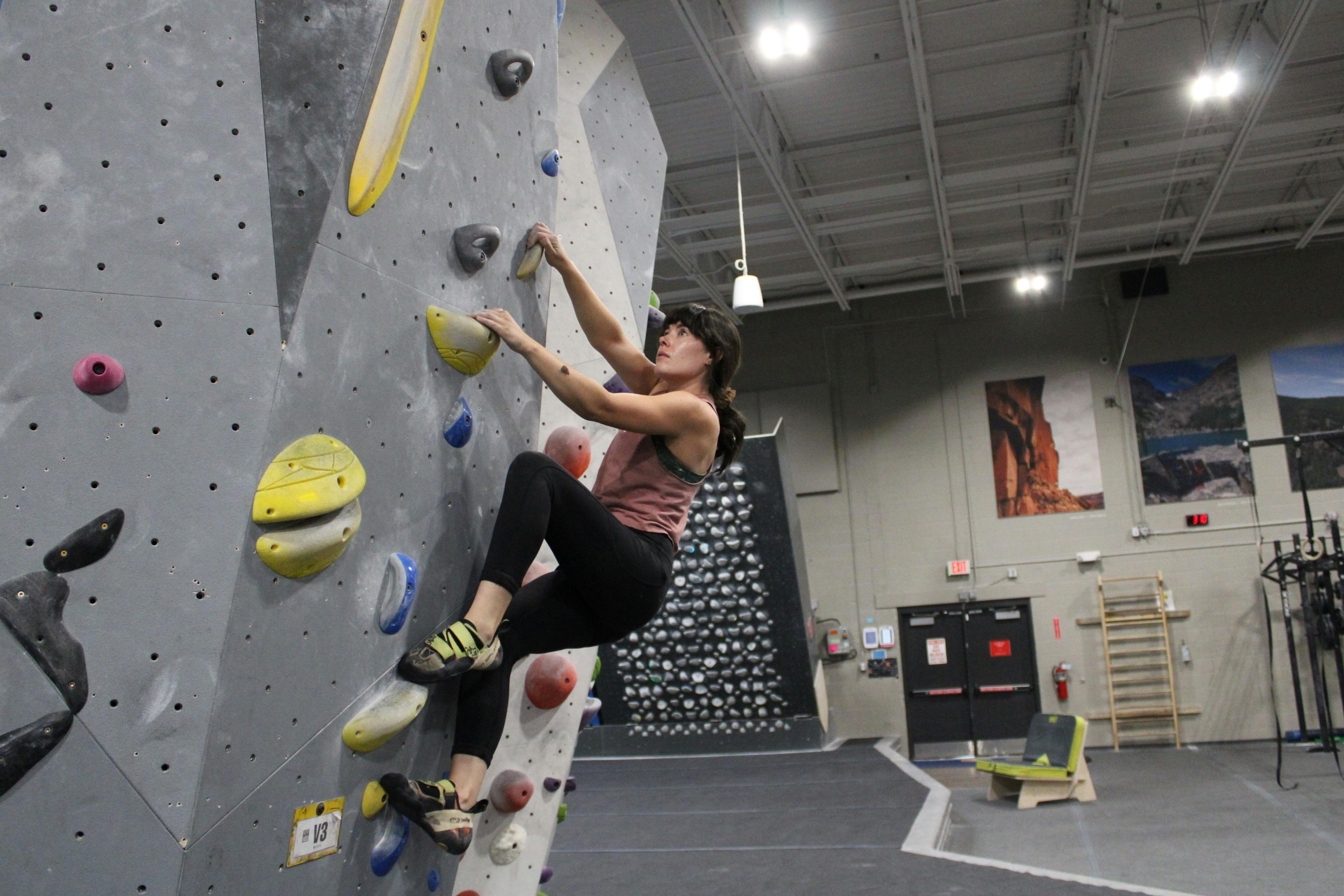October 18, 2022
Climbing Smart and Avoiding Injuries
Welcome to our series about the first month of climbing!
The first month of doing anything can be overwhelming, challenging, and stressful. For physical activities like climbing, it can also introduce us to muscle groups we didn’t know existed or levels of soreness we never imagined!
Here’s the good news: it gets easier the more you do it. That’s not just with soreness - sticking to a routine, finding Buds, and setting attainable goals for your first month makes every day feel more conquerable than the last.
While a certain amount of muscle soreness is to be expected when we work our bodies in new ways, we can do quite a bit to mitigate needless aches and pains. Check out some of our top tips below:
Hydrate
This is a BIG one, both for climbing and outside of it. Having enough water in our system ensures that our bodies function properly under physical stress, and reduces the likelihood of a muscle or joint injury. Make sure to hydrate well before, during, and after your climbing session. Drinks with electrolytes can also be helpful for keeping your body well-hydrated and ready to respond to the stresses that climbing imposes on it.
Warm Up and Warm Down
Warming up with some light cardio exercises, stretches, and easy climbing helps to prepare the body for working harder throughout the climbing session. Similarly, repeating these exercises at the end of your workout helps the muscles to drain lactic acid, which can hurt like crazy if it stays in your muscles. As a bonus, this is a great time to chat and catch up with your Buds at the gym. It can be hard to talk on the wall, but 15 minutes of warming up and down provides a great opportunity to connect on a deeper level with your Buds.
Take it Easy
We’re going to go over goal setting in another post, but in short: don’t overdo it on your first few trips to the gym. You might want to do a 6 hour session to make the most of your “day” pass, but rather than make you fall in love with climbing, this will probably just give you incredibly sore muscles or tendon injuries. Remember that the gym will always be there tomorrow - listen to your body and climb what feels comfortable for the first few sessions for as long as that may be. 20 minutes of climbing with no injuries and soreness is better than 4 hours and two months off to let a finger heal!
Rest Days
On that note, climbing every day when you’re first getting started is almost universally not recommended. Two or three climbing sessions per week when you’re getting started is plenty. If you’re itching to hang with your new Buds on a rest day, we totally get that! A board game kickback, a dinner party, easy biking, or a brewery trip can do a lot for deepening friendships, and those relationships make it that much better to get to the gym each week.
Stretching
There are plenty of experts on stretching who have incredible, well-tested content to follow, so we won’t tell you the specific stretches to do, but we’ll tell you where you’re likely to feel soreness or pain the most. When you’re getting started, your forearms, biceps, shoulders, abs, and back (upper and middle) are going to feel WAY different. Even if you’ve done weight training or upper body activities before, climbing imposes very unique demands on these parts of the body. Check out some stretches for these muscle groups and leave enough time at the end of your session to stretch properly. Doing so can mean the difference between being able to open a bag of coffee the next morning or begging your roommate to help out!
Foam rollers or massage guns can also help to improve the stretching process, but plenty of experienced climbers get by just fine with old-school stretching. Lots of gyms have stretching equipment in a traditional workout section - take advantage!
Yoga
Finally, as a part of your day pass, your gym may offer free or discounted yoga classes. If you can structure your climbing session around a yoga class, this can be a great way to stretch your body and improve your flexibility. Yoga is a great secondary activity that we’re seeing in more and more gyms. Make use of all the offerings of your local gym!
While not inclusive of everything you can do to help with muscle soreness, we hope this provides a solid foundation for your recovery game plans. Be sure to ask your Buds what they’re doing to ease muscle soreness and prevent injuries as well. Learning from friends and peers is one of the best ways to gain new skills and find friends to help with accountability throughout the recovery process.
**Disclaimer: Nobody on the BetaBuds team is a doctor or works even remotely close to the medical field, and the above is an expression of the things that have worked for us in the past. It is NOT medical advice and should not be interpreted as such. Consulting with a doctor before starting a new physical activity or fitness regimen is always advisable.
